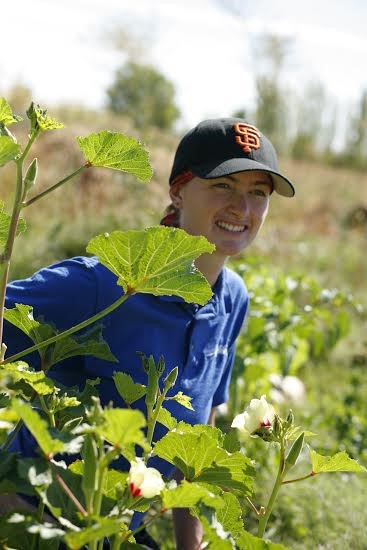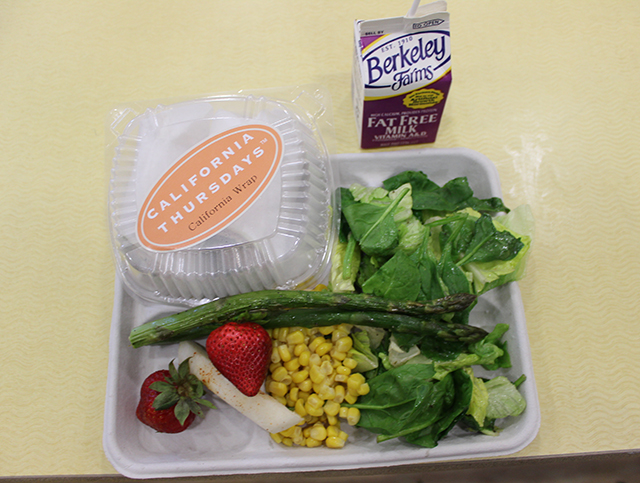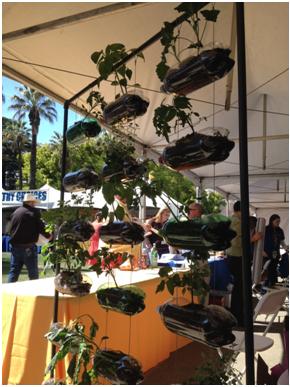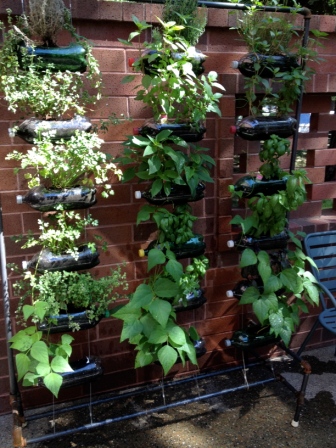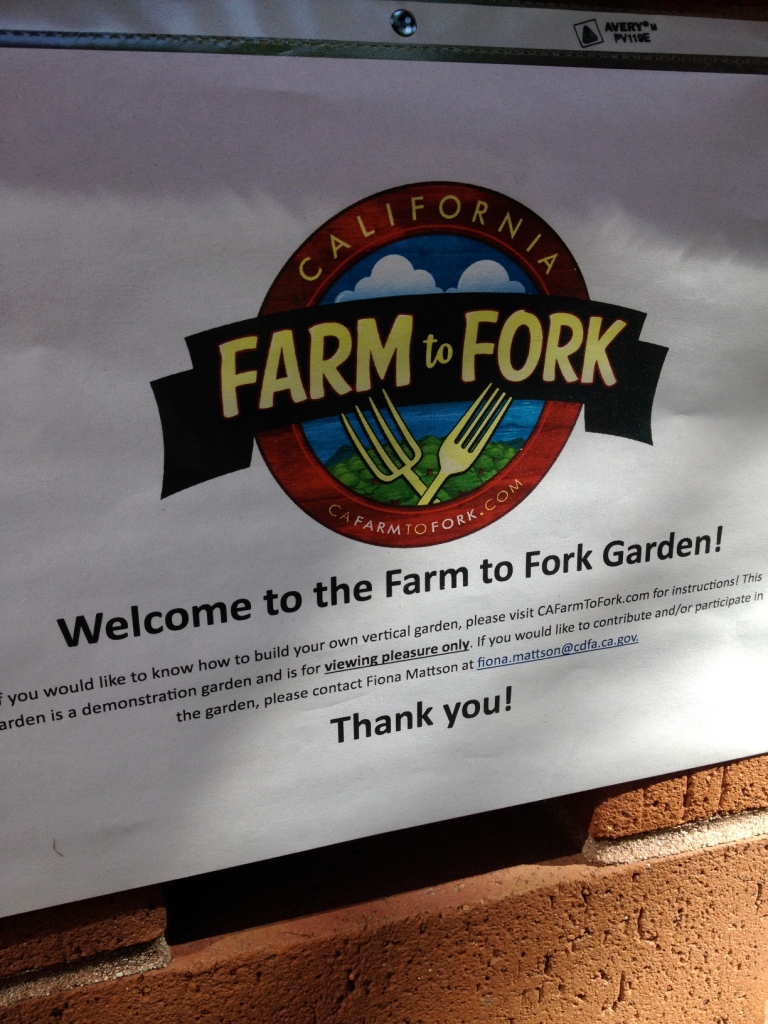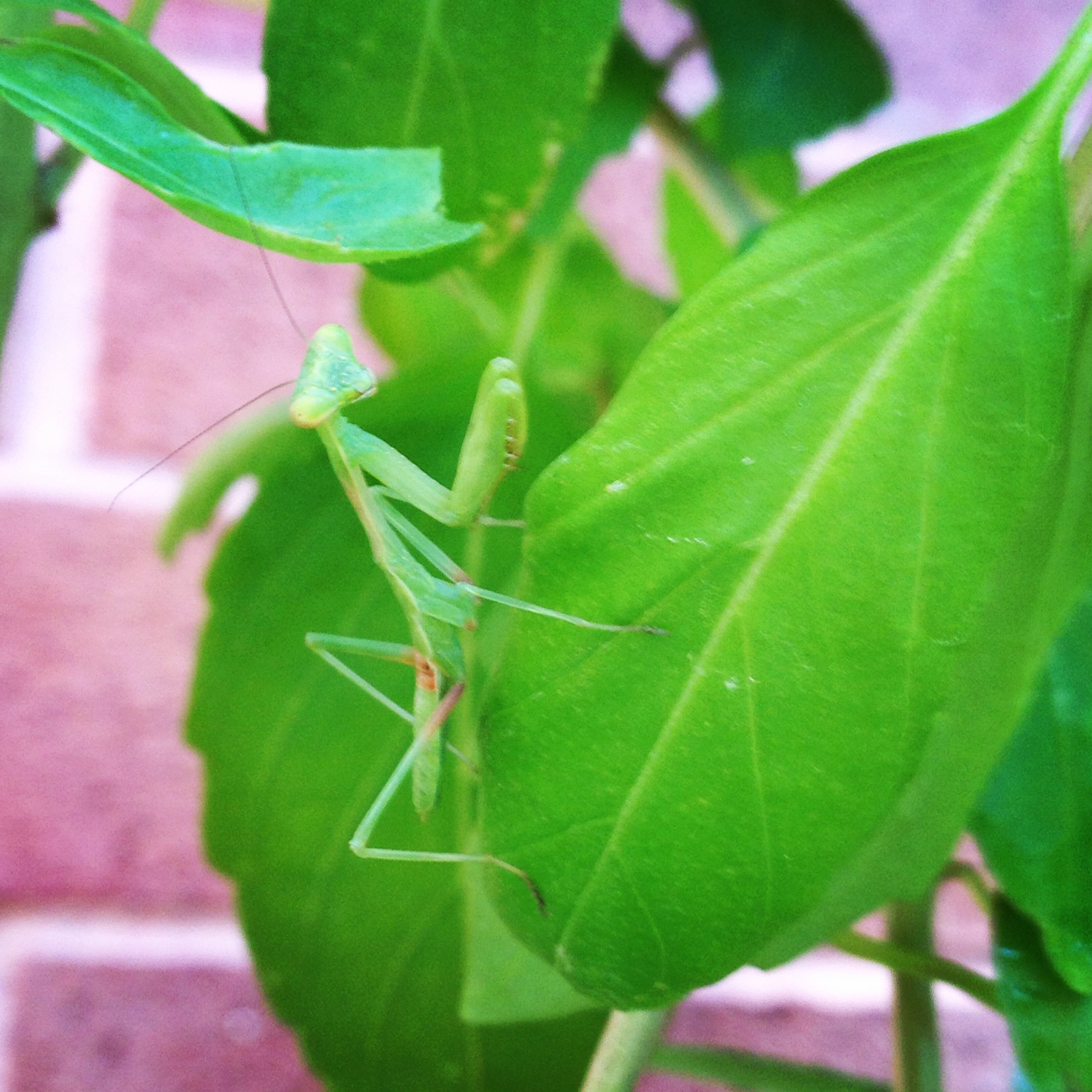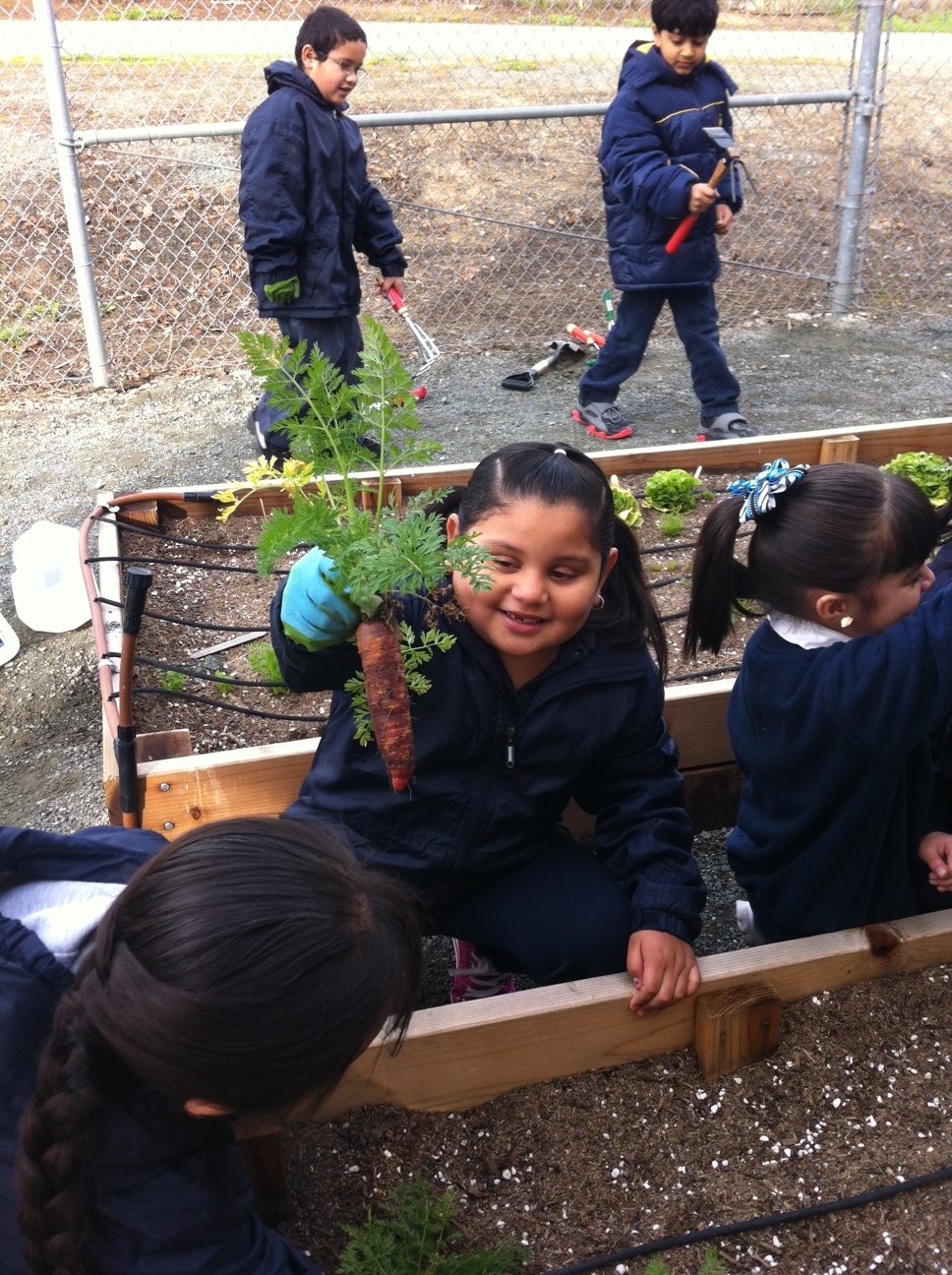***This is the second post in our series “Tales from the Specialty Crop Ambassadors” – blog posts written by farmers working with the Center for Land-Based Learning in Winters, CA. The Specialty Crop Ambassadors are spearheading projects that support consumption, education, and access to California specialty crops.***
By Anna-Ruth Crittenden
It has been a very eventful month for Farm-to-Mouth as our ½ acre garden is producing more than in previous years. I have been running Farm-to-Mouth for about two years and was looking forward to this summer season because we had successfully gotten a cover crop in in the fall, made contact with a neighbor willing to do tractor work for us, and received an amazing donation of 60 yards of compost. In addition to that, we built a greenhouse in the springtime so we were able to start many of our transplants right here on site.
Here’s the garden on the day we received the compost donation, when we were spreading the compost, and right after transplanting:
Farm-to-Mouth is a supported employment-training program for people with mental illness in Yolo County. We grow our produce on a ½ acre garden at the Farmhouse, a long-term residential care facility and part of the Yolo Community Care Continuum, a well-established non-profit based in Woodland that provides many services to this population.
This season Farm–to-Mouth has had about 12 employees and every week there is lots to do in the garden. The summer squash was the first crop to be ready for harvest and other crops were growing quite well so we planned the first Farm Stand for Wednesday July 1st.
I asked two of Farm-to-Mouth’s longest standing and most consistent employees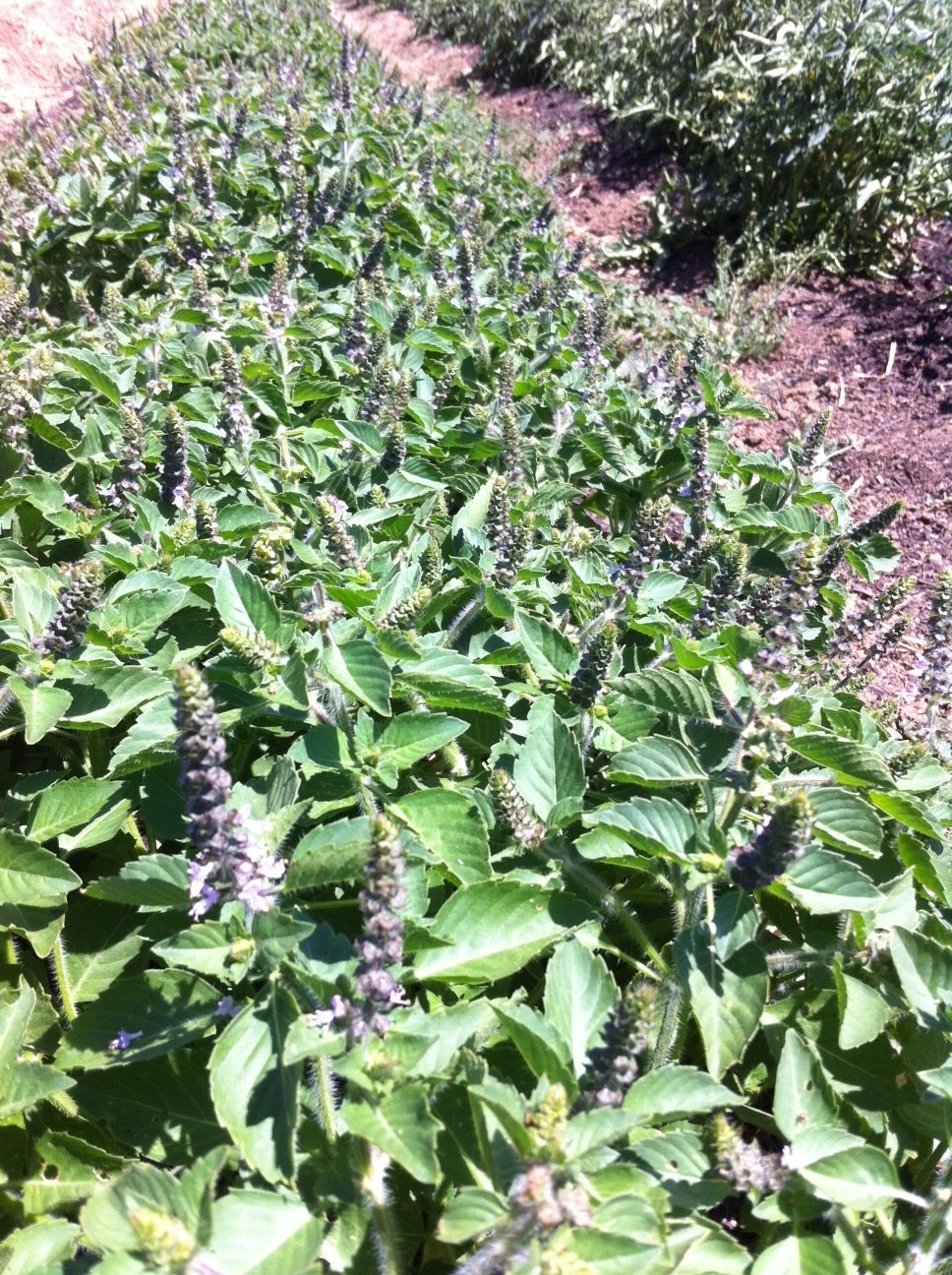 to work the first Farm Stand. It was a great start: we had four customers. There were mostly squash and quite a few lemon cucumbers available; the brown paper bags are full of dried tulsi, or Holy Basil. This herb gets a high price in the commercial market and is used to make a refreshing tea similar to chamomile. Many Farm-to-Mouth employees have never heard of tulsi when they start working in the garden but become fans of the herb as a tea and are encouraged to take it home with them.
to work the first Farm Stand. It was a great start: we had four customers. There were mostly squash and quite a few lemon cucumbers available; the brown paper bags are full of dried tulsi, or Holy Basil. This herb gets a high price in the commercial market and is used to make a refreshing tea similar to chamomile. Many Farm-to-Mouth employees have never heard of tulsi when they start working in the garden but become fans of the herb as a tea and are encouraged to take it home with them.
I am glad that we have gotten started with the Farm Stands this season because it is the first time since Farm-to-Mouth started that the employees can be directly involved with marketing their produce. Although the attendance at the Farm Stand events has been low, I am optimistic that as word spreads people will tell others and we can get more of a buzz going for our efforts. As it is now, Farm-to-Mouth employees take home surplus produce after the event and we have connected with Davis Community Meals for donations of everything leftover after that.
We have received many positive responses to the Farm Stand but our biggest challenge is our location which is quite far off the beaten path for many people. However, I think that the more often people make the trip out to the Farm Stand, the more they will learn about the program which will be very beneficial in the long-term.
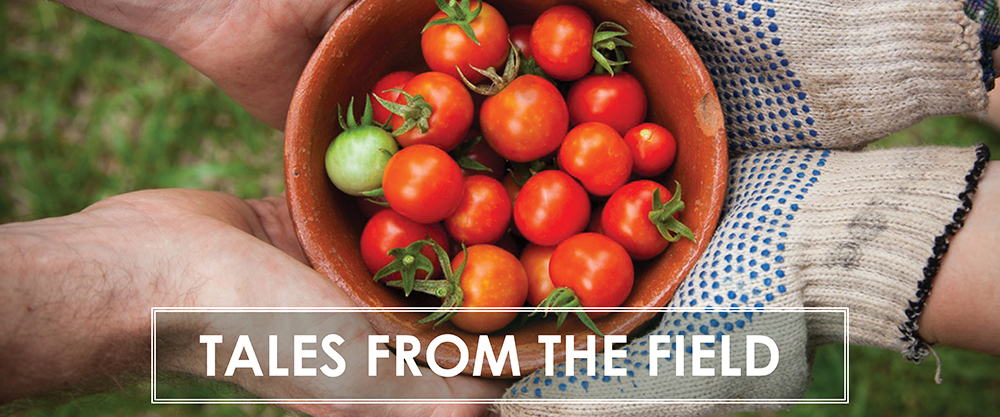


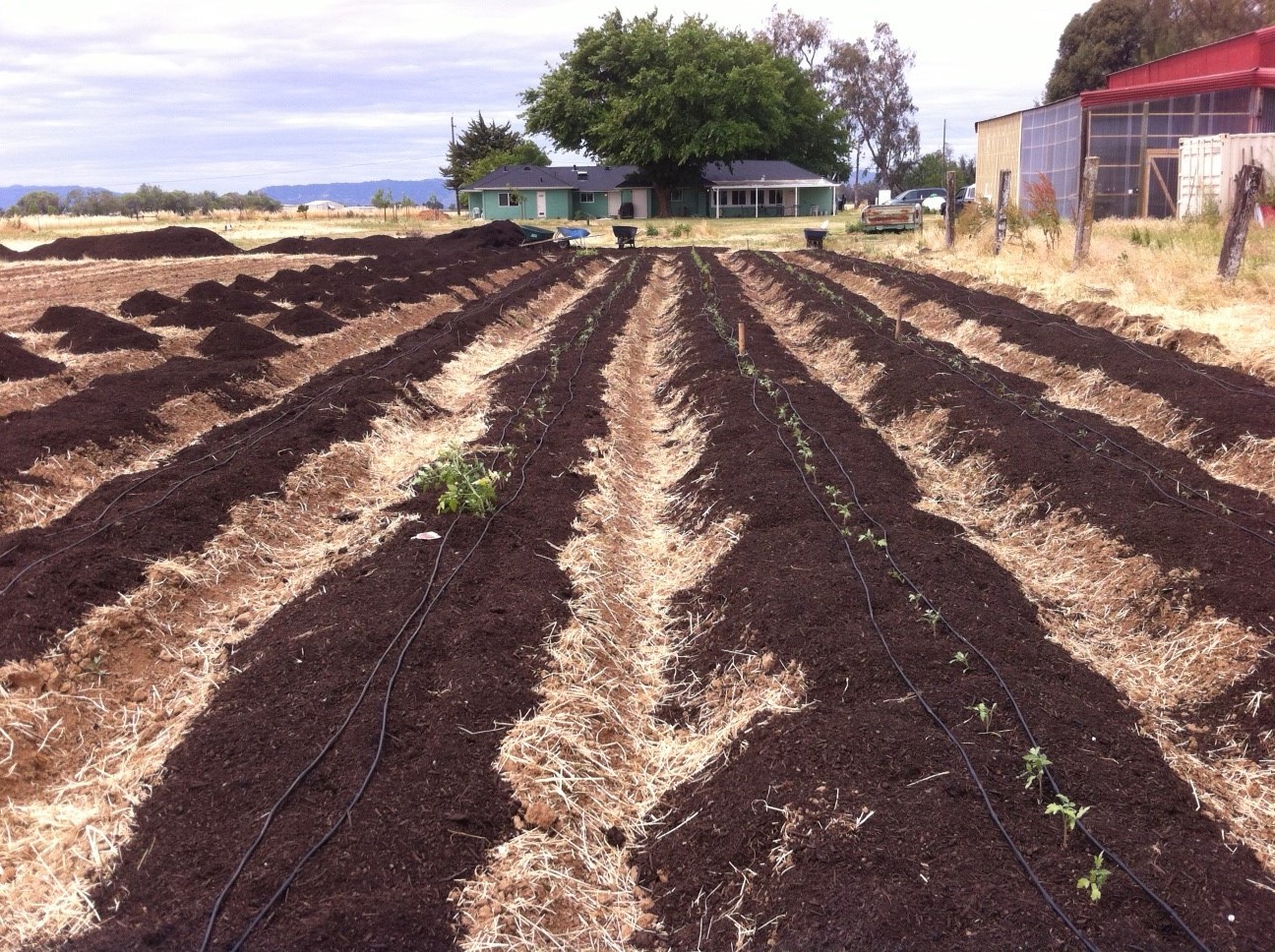
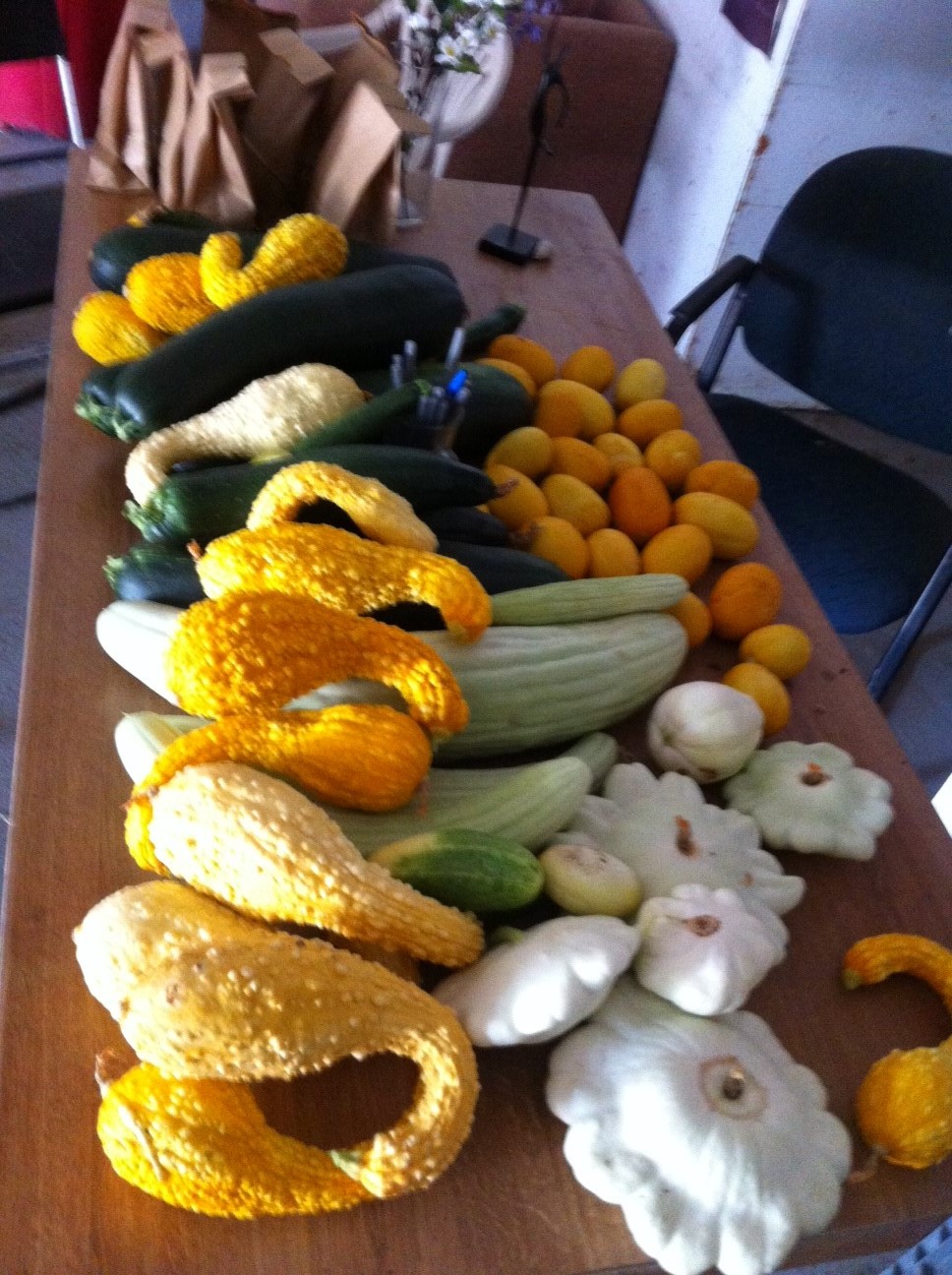
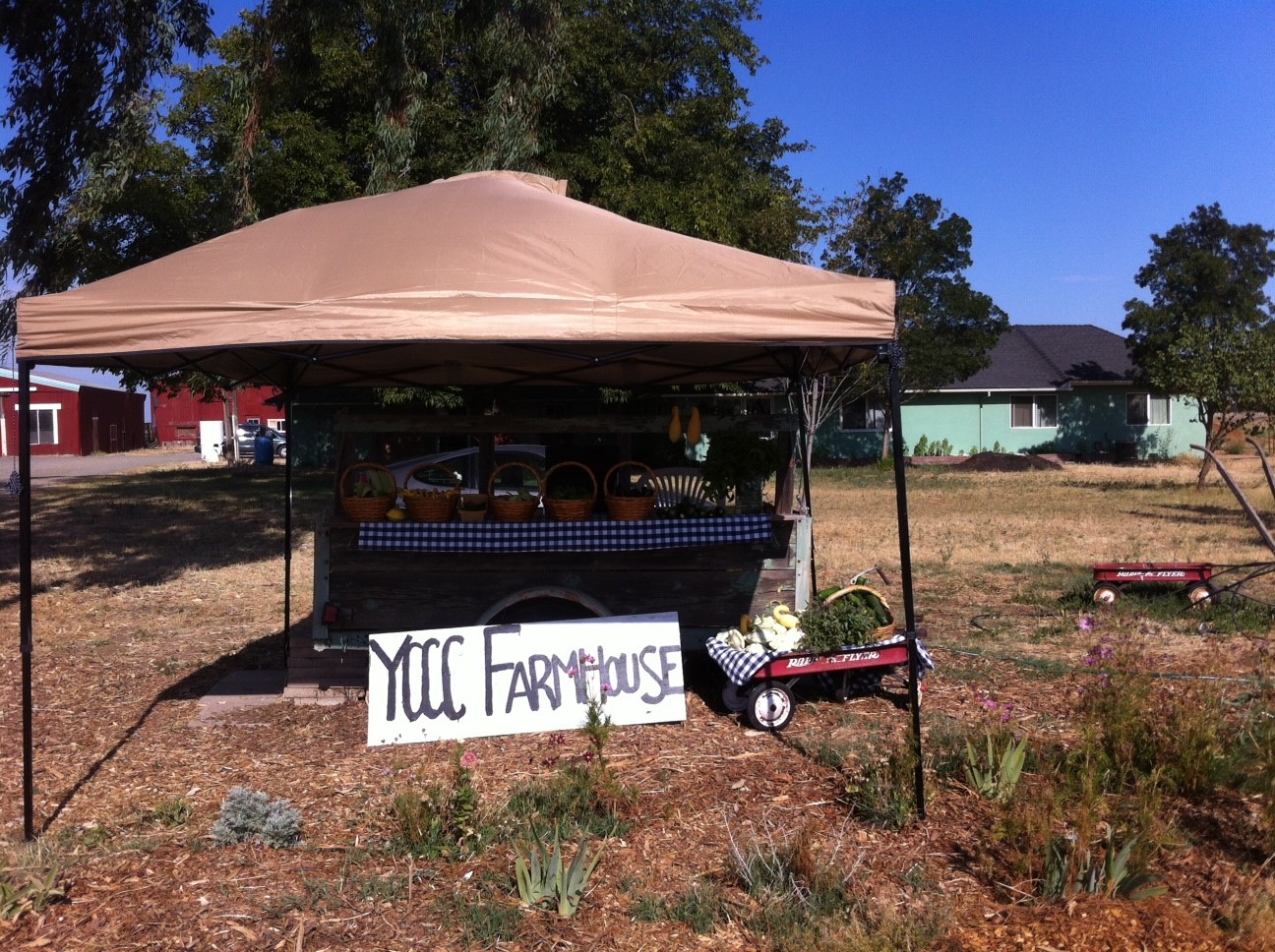
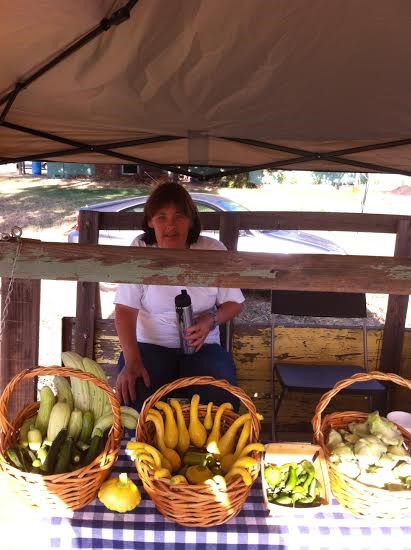
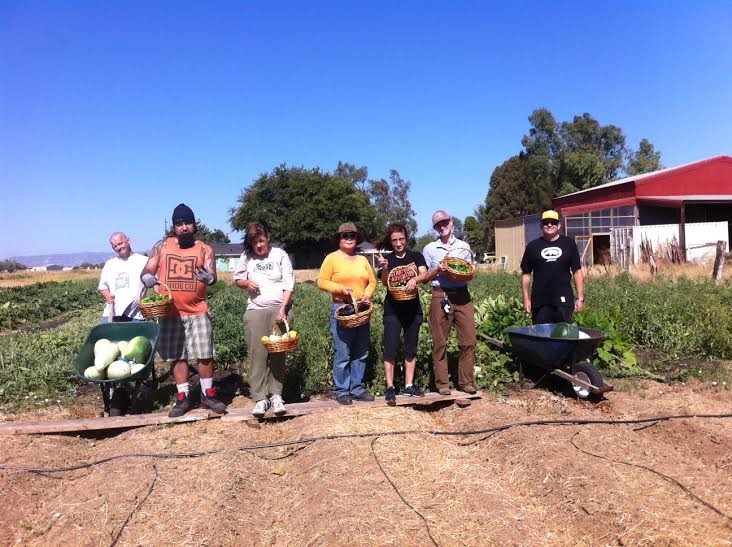

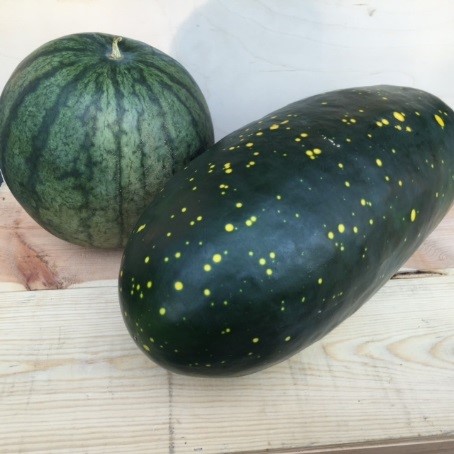



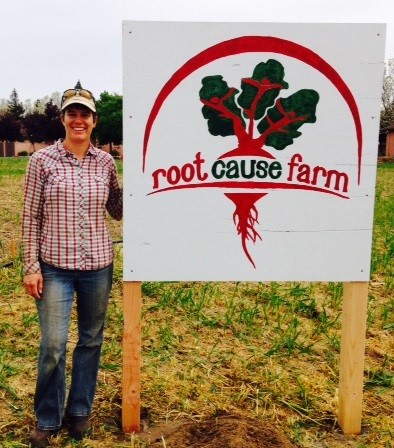 an urban farm in West Sacramento, where she grows a variety of vegetables and melons. Aimee began farming as a way to increase access to healthy, affordable food, a passion that stems from her background as a public health physician. As part of CDFA’s Specialty Crop Ambassador Program, Aimee runs a Farmer in Training program for grade-school children who live in the neighborhood around Root Cause Farm.
an urban farm in West Sacramento, where she grows a variety of vegetables and melons. Aimee began farming as a way to increase access to healthy, affordable food, a passion that stems from her background as a public health physician. As part of CDFA’s Specialty Crop Ambassador Program, Aimee runs a Farmer in Training program for grade-school children who live in the neighborhood around Root Cause Farm.
 Shane is a graduate of the California Farm Academy class of 2014 and Katherine is an Elementary educator. They are passionate about farming and educating future generations about the food system and stewardship of our natural resources.
Shane is a graduate of the California Farm Academy class of 2014 and Katherine is an Elementary educator. They are passionate about farming and educating future generations about the food system and stewardship of our natural resources.